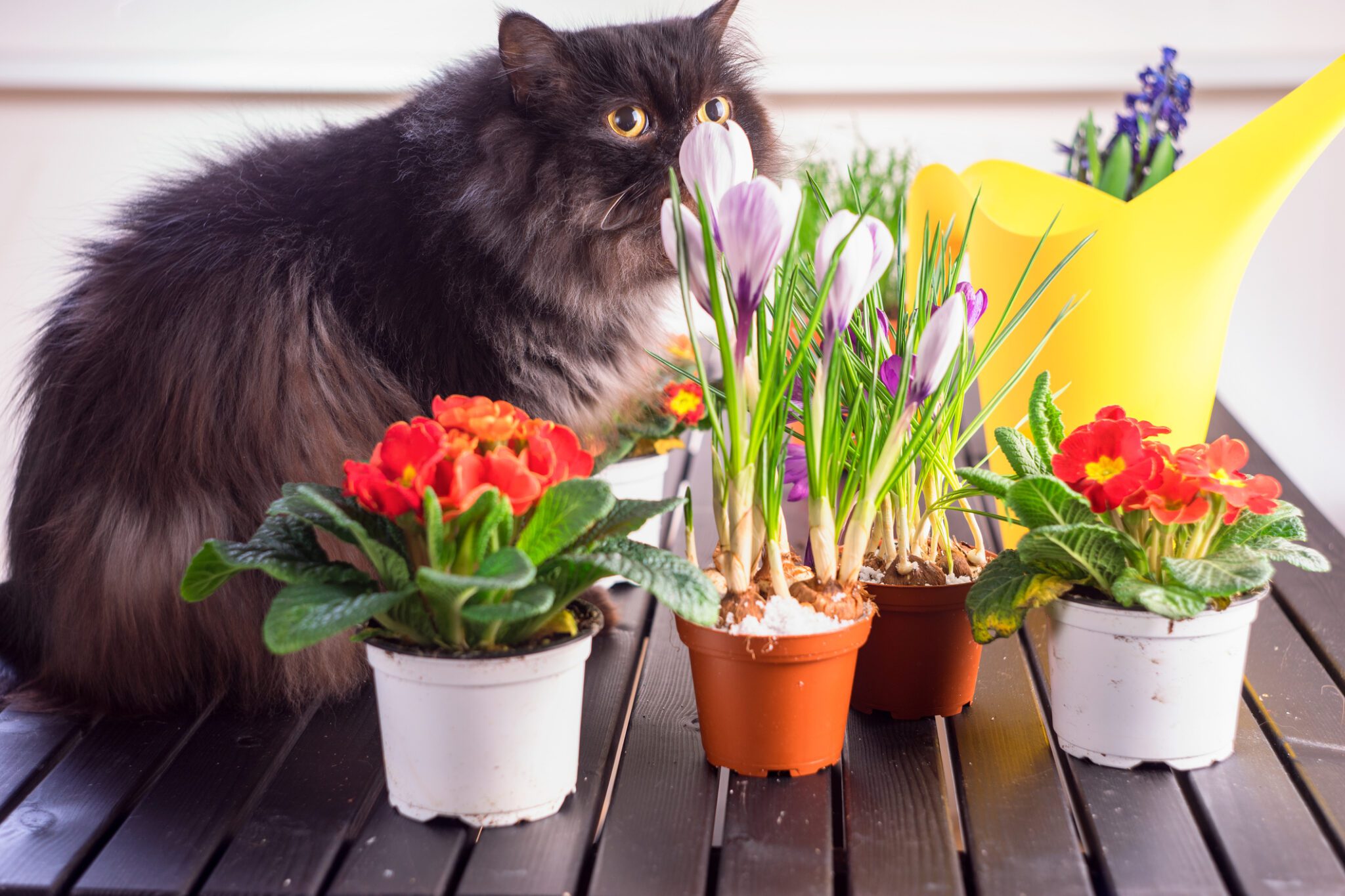Ultimate List of Toxic Plants for Cats
As pet owners, we often strive to provide a safe and healthy environment for our feline friends. Part of that responsibility involves being aware of potential hazards in our homes and gardens, especially when it comes to plants. Some plants can be beautiful additions to our living spaces or outdoor landscapes but may pose a threat to our cats. In this guide, we’ll explore plants that are toxic to cats, categorizing them as common or uncommon, and identifying whether they are typically found indoors or outdoors.

Common Indoor Toxic Plants for Cats
1. Lilies
Lilies are known to be highly toxic to cats. The ingestion of any part of the plant, especially Easter lilies and tiger lilies, can lead to kidney failure. These are often found indoors as popular decorative flowers, so be cautious if you have them at home.
2. Dieffenbachia
Dieffenbachia, also known as dumb cane, is a common houseplant. It can cause oral irritation, swelling, and difficulty swallowing if chewed by cats.
3. Philodendron
Philodendron plants are common indoor houseplants. They contain insoluble calcium oxalates that can irritate a cat’s mouth and throat, leading to drooling, vomiting, and breathing difficulties.
4. Pothos
Pothos is another popular indoor plant. Ingestion can cause similar symptoms to philodendron, including oral irritation, drooling, and digestive issues.
Uncommon Indoor Toxic Plants for Cats
1. Sago Palm
Sago palms are less common as indoor plants but can be highly toxic. Ingesting any part of the sago palm can result in liver failure in cats, so exercise caution if you have one indoors.
2. Mistletoe
Mistletoe, whether artificial or real, is less commonly found indoors. Ingesting it can lead to severe gastrointestinal distress and heart problems in cats.
3. Amaryllis
Amaryllis bulbs are typically grown indoors for their striking blooms. However, these bulbs are particularly toxic to cats, causing vomiting, diarrhea, and tremors.
Common Outdoor Toxic Plants for Cats
1. Foxglove
Foxglove is a beautiful but common outdoor plant. It contains toxins that can be fatal to cats if ingested. Symptoms may include heart problems, vomiting, diarrhea, and even death.
2. Azalea
Azaleas are a common ornamental shrub in outdoor gardens. They are known to cause vomiting, diarrhea, drooling, and heart issues in cats.
Uncommon Outdoor Toxic Plants for Cats
1. Autumn Crocus
Autumn crocus is less common in outdoor gardens but is highly toxic to cats. Ingestion can result in severe gastrointestinal distress, organ failure, and death.
2. Rhododendron
Rhododendrons are not as common as azaleas but can be found in some gardens. They contain grayanotoxins, which can lead to vomiting, drooling, and heart abnormalities in cats.
3. Yew
Yew is another outdoor plant that is less common but highly toxic. Ingestion can cause rapid death in cats, with symptoms such as difficulty breathing, trembling, and seizures.
Help Keep Your Cats Safe and Healthy
While the list of toxic plants for cats is extensive, knowing which ones are common or uncommon and whether they are typically found indoors or outdoors can help you take proactive steps to protect your feline companions. Always be vigilant about the plants in your environment and remove or restrict access to any potentially hazardous vegetation.
If you suspect your cat has ingested a toxic plant or is displaying symptoms of plant poisoning, seek immediate veterinary attention. Your vigilant care is essential in ensuring the safety and well-being of your beloved feline friends.
At Warrick Veterinary Clinic, we care about the health and well-being of your pets. If you would like to schedule an appointment at any of our locations, give us a call at (812) 897-4855 or request an appointment online today!
